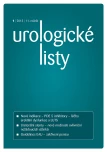Bipolar plasma vaporization of prostate for symptomatic large benign prostatic enlargement: two-year clinical results
Authors:
W. S. Chan; C. Kan
Published in:
Urol List 2013; 11(1): 55-59
Overview
Big benign prostate enlargement (BPE) has always been a difficult condition to treat for urologists. Although transurethral resection of prostate (TURP) is the gold standard for BPE, even TURP is known to associate with high complication rate. We explore the use of bipolar transurethral electrovaporization of prostate (bipolar TUEVP) to tackle this surgical problem and reported our 2-year follow up results. We found good peri-operative results with favorable blood loss and hospital stay results, as well as clinical improvement over the voiding status of the patients in the first year. However, the clinical effect wore off after 2-year’s follow up. We conclude that bipolar TUEVP mono-therapy, should be indicated for selected patients who require a safe surgery to earn a relatively short period of relief from bladder outlet obstruction due to a big prostate.
Key words:
benign prostatic enlargement, bipolar, transurethral, electrovaporization
Sources
1. Mebust WK, Holtgrewe HL, Cokett AT et al. Transurethral prostatectomy: immediate and post-operative complications. A co-operative study of 13 participating institutions evaluating 3885 patients. J Urol 1989; 141(2): 243–247.
2. Uchida T, Ohori M, Soh S et al. Factors influencing morbidity in patients undergoing transurethral resection of the prostate. Urology 1999; 53(1): 98–105.
3. Reich O, Gratzke C, Bachmann A et al. Morbidity, mortality and early outcome of transurethral resection of the prostate: a prospective multicenter evaluation of 10,654 patients. J Urol 2008; 180(1): 246–249.
4. Oelke M, Alivizatos G, Emberton M et al. Guidelines on benign prostatic hyperplasia. In Parsons KF, Irani J, Chapple CR et al (eds). European Association of Urology Pocket Guidelines, Arnhem: Europena Association of Urology 2009: 90–97.
5. Varkarakis I, Kyriakakis Z, Delis A et al. Long-term results of open transvesical prostatectomy from a contemporary series of patients. Urology 2004; 64(2): 306–310.
6. Helfand B, Mouli S, Dedhia R et al. Management of lower urinary tract symptoms secondary to benign prostatic hyperplasia with open prostatectomy: results of a contemporary series. J Urol 2006; 176(6): 2557–2561.
7. Tubaro A, Carter S, Hind A et al. A prospective study of the safety and efficacy of suprapubic transvesical prostatectomy in patients with benign prostatic hyperplasia. J Urol 2001; 166(1): 172–176.
8. Serretta V, Morgia G, Fondacaro L et al. Open prostatectomy for benign prostatic enlargement in southern Europe in late 19902: a contemporary series of 1800 interventions. Urology 2002; 60(4): 623–627.
9. Gratzke C, Schlenker B, Seitz M et al. Complications and early postoperative outcome after open prostatectomy in patients with benign prostatic enlargement: results of a prospective multicenter study. J Urol 2007; 177(4): 1419–1422.
10. Narayan P, Tewari A, Garzotto M et al. Transurethral vaportrode electrovaporization of the prostate: physical principles, technique, and results. Urology 1996; 47(4): 505–510.
11. Kaplan S, Te A et al. Transurethral electrovaporization of the prostate: a novel method for treating men with benign prostatic hyperplasia. Urology 1995; 45(4): 566–572.
12. Kaplan S, Te A. A comparative study of transurethral resection of the prostate using a modified electro-vaporizing loop and transurethral laser vaporization of the prostate. J Urol 1995; 154(5): 1785–1790.
13. Poulakis V, Dahm P, Witzsch U et al. Transurethral electrovaporization vs transurethral resection for symptomatic prostatic obstruction: a meta-analysis. BJU Int 2004; 94(1): 89–95.
14. Fagerstrom T, Nyman C, Hahn R et al. Bipolar transurethral resection of the prostate causes less bleeding than the monopolar technique: a single-centre randomized trial of 202 patients. BJU Int 2010; 105(11): 1560–1564.
15. Michielsen D, Debacker T, De Boe V et al. Bipolar transurethral resection in saline—an alternative surgical treatment for bladder outlet obstruction. J Urol 2007; 178: 2035–2039.
16. Geavlete B, Multescu R, Dragutescu M et al. Transurethral resection (TUR) in saline plasma vaporization of the prostate vs standard TUR of the prosate: ‘the better choice’ in benign prostatic hyperplasia? BJU Int 2010; 106(11): 1695–1699.
17. Noguera R, Rodriguez R. Open adenomectomy: past, present and future. Curr Opin Urol 2008; 18(1): 34–40.
18. Geavlete B, Georgescu D, Multescu R et al. Bipolar plasma vaporization vs monopolar and bipolar TURP – a prospective, randomized, long-term comparison. Urology 2011; 78(4): 930–935.
19. Ishikawa N, Goya N, Iguchi Y et al. Comparison of the depth of the desiccated zone with selected vaporizing-cutting electrodes: a basic study in animals. BUJ Int 2000; 85(6): 754–758.
20. Thomas K, Cornaby A, Hammadeh M et al. Transurethral vaporization of the prostate: a promising new technique. Br J Urol 1997; 79(2): 186–189.
21. Deasutel M, Burney T, Diaz P et al. Outcome of vaportrode transurethral vaporization of the prostate using pressure-low urodynamic criteria. Urology 1998; 51(6): 1013–1017.
Labels
Paediatric urologist UrologyArticle was published in
Urological Journal

2013 Issue 1
Most read in this issue
- Management of the adult buried penis
- Varicocele and the signification of its repair
- EAU Guidelines on penile curvature
- A review of current practices and controversies in the use of indwelling ureteric stents
